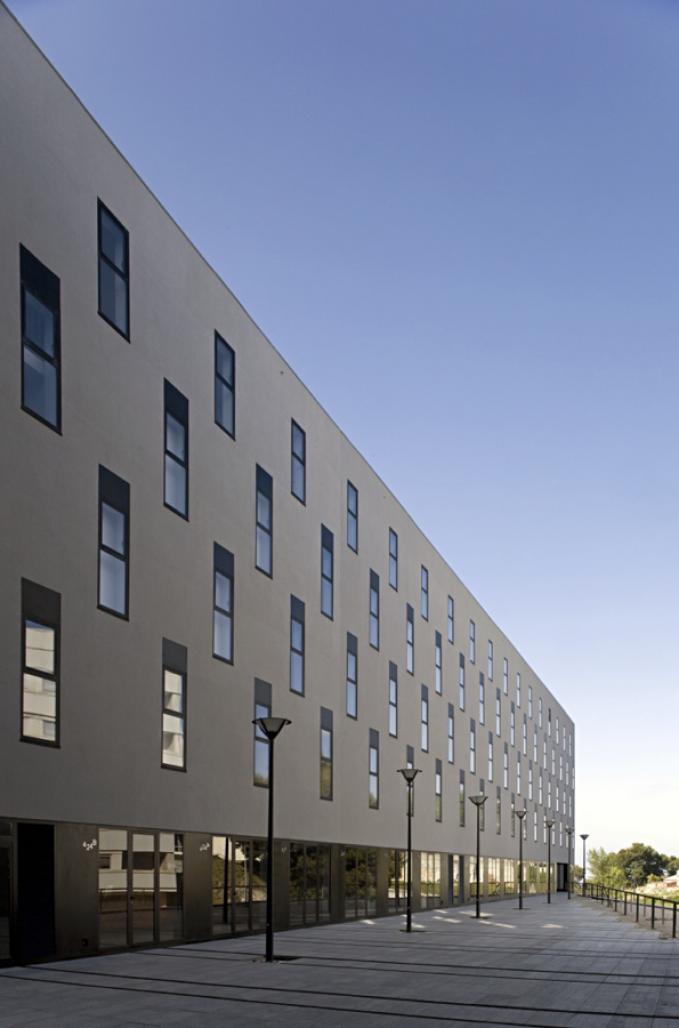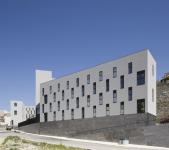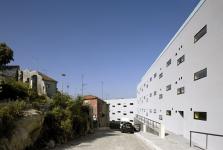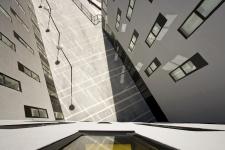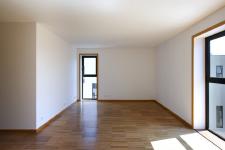The (re)designing of this part of the city had its starting point at the recognition of the significant permanence of the surrounding urban structure.
The proposed building adapts by filling urban empty space, searching for an urban unit of new and old fragments, products of different moments. These fragments can never be “reduced” to an immediate unit, but must coexist as parallel realities.
We sought to make sure that exterior facades would not simply mimic the desired unit, but would reproduce an artistic image resulting from the articulation and integration of the nearest enclosure (Lapa) and the furthest.
The proposal is establishead on the overflow of the limits of the lot, adapting the building to the street and affirming the recognition of the significant points of urban reality.
The different heights of the volumetry respond to the context and variation of scale, producing a significant building / space that mediates between two ways of creating a city.
For economic reasons, we find it consistent to use a typology based on the “left – right” outline. Furthermore, the morfhological characteristics of the lot, the tittle depht it allows and the little depth desired for the building impede any other sort of typology. Therefore we have introduced typological rationality in the distribution of the housing units that is only broken at trning points on the floor plan. The entrances are directly related to the proposed housing typology and, at the same time, in accordance with the programmatic and functional organisation. The entrances are located around the central space, fundamental in the articulation of the different scales. Access to the car park is from the patio and adjacent streets (on corners and in the middle of the building). The distribution of the housing units follows an outline on both sides of a hall. It identifies whit the adjoining fabric and is the result of an approximation to the typology based on the composition elements of the facade. Given the diferences in elevation of the streets, facing the bedrooms towards the patio and the wet areas towards calle Salgueiros is almost compulsory. In this way, window size is reduced, providing more privacy.
The car park, whit one parking place PER housing unit, has entrances on both adjacent streets and is distributed on two levels.
1996
2007
Site
Travessa de Salgueiros / Rua de Cervantes, Oporto, Portugal
Client
GOP- EM da Câmara Municipal do Porto
Dates planning
Design: 1996
Project: 1996 / 2002
Construction: 2002 / 2007
Fhotographer
João Ferrand
Engineers
Hídria
Eng. França Monteiro
Eng. França Martins
General Contractor
FERSEQUE
FDO
Constructed surface
5848,27m2
Materials
External Thermal Insulation Composite Systems with rendering, wood, glass and metallic structure.
Architects
Carlos Jorge Coelho Veloso
Gil Miguel Monte Gonçalves
Hélder Manuel Reis Coelho
Team
Rui Filipe Coelho Veloso
Favorited 1 times
